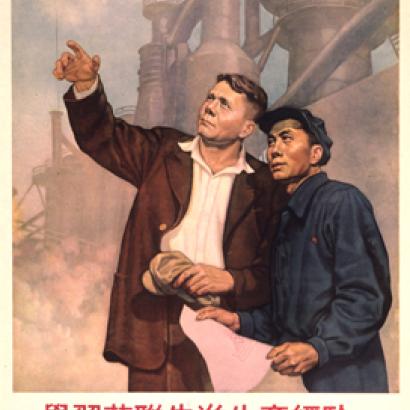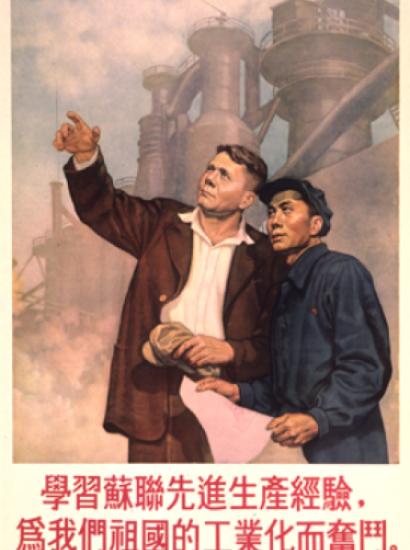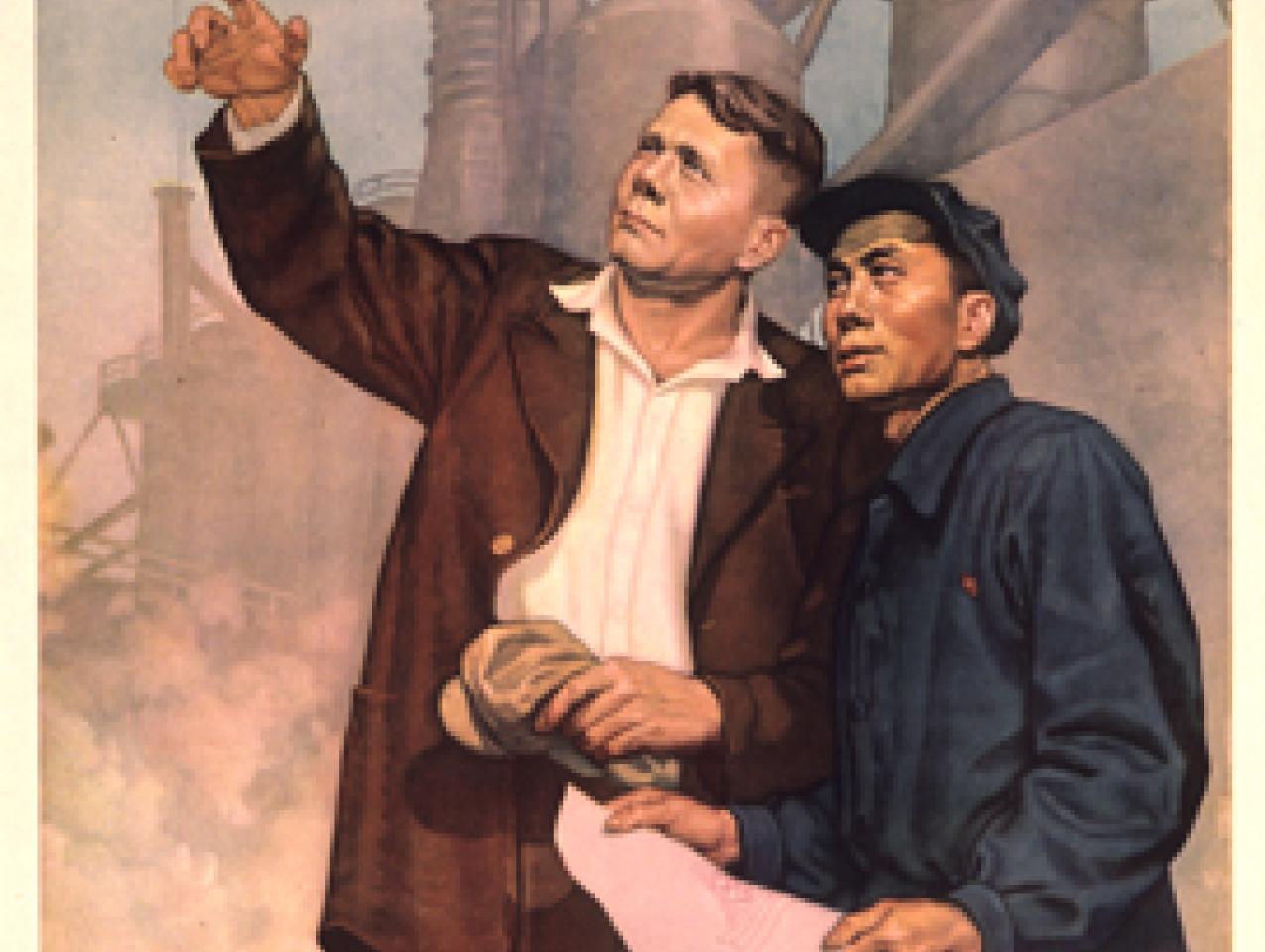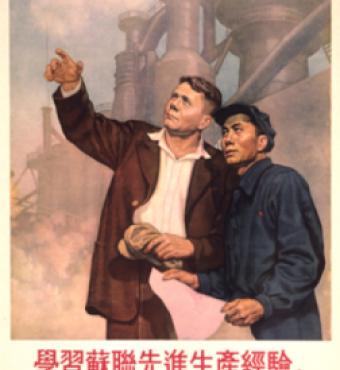- History
- World
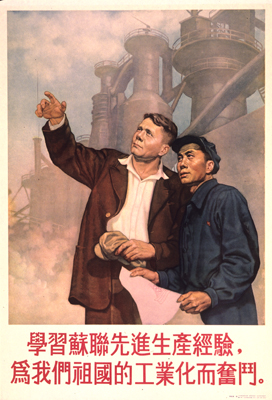
A significant portion of our national security establishment, painstakingly built up during the Cold War, has accepted the assumption that when it comes to threats from sovereign states, Russia, not China, is America’s leading adversary. We routinely hear our national leaders speak of Vladimir Putin’s bad behavior in places such as Ukraine and Syria, which further enhances the notion that the most formidable challenge to the preeminence of the U.S. in a post-Cold War world is Moscow, not Beijing.
Or, when China’s revisionist actions and military growth can no longer escape our attention, we often put Russia and China—always in that order—into one category as if Moscow and Beijing are bound together through a common strategic vision against the U.S.-led world order.
Neither is true.
There is no denying that both Russia and China harbor significant hostility toward the United States, albeit for very different reasons. But the degree to which Moscow and Beijing can transfer their respective antagonism into actual harm against the U.S. is dramatically different.
First of all, China’s economy is four times larger than Russia’s, in terms of conventional GDP. If one uses the more accurate Purchasing Power Parity [PPP] method, China’s GDP is five times greater than Russia’s—$12.26 trillion for China and $2.49 trillion for Russia. In addition, China holds the world’s largest currency reserve, estimated at over $3 trillion (again, almost four times the size of Russia’s reserves). With that kind of economic muscle, China has outspent Russia on defense by more than a ratio of 2:1, and China has been increasing its defense budget by double digits on a yearly basis for the past 25 years.
In fact, Russia’s military power is weakening in relative terms while China’s is strengthening rapidly, making Russia a junior partner in the Sino-Russian bilateral military and economic relationship. Partially because of the severe western economic and financial sanctions, Russia needs Chinese cash badly. President Vladimir Putin has already broken his own sacred vow of never selling to China some of Russia’s strategic assets in exchange for hard cash. Particularly alarming items on Russia’s fire sales list are two game-changers that might tip the military balance in China’s favor in the western Pacific in a battle scenario with the United States, namely Russia’s next-generation fighter jets the Su-35, and Russia’s most advanced long range missile defense system, the S-400. Both had been on the Kremlin’s not-for-export list until 2015 when Putin approved the sales of 24 Su-35s and six-battalions of the deadly S-400 missiles to China, the first-ever foreign country to have received such advanced Russian weapons.
The Su-35s will give China the much coveted Russian AL-41F/117S thrust vectoring engine technology with which the Chinese can reverse engineer for serial production for their own 5th-generation fighter jets, such as the J-20s and the J-31s. The S-400 missiles will double China’s missile defense range, which will for the first time allow the PLA to shoot down aircraft in an area that covers all of Taiwan, reaching as far as Hanoi and New Delhi.
More importantly, the chances that China will attack America’s allies, especially Japan and the Philippines, are much greater than the possibility that Russia will attack America’s allies in Europe. Despite the huff and puff from Vladimir Putin against Ukraine, which is not part of the NATO collective defense alliance led by the U.S., a general war is quite unlikely.
But the level of tension and the fervency with which China has been provoking Manila and Tokyo, both allies of the U.S. with collective defense arrangements with Washington, are far more likely to drag the world’s three largest economies (i.e., the U.S., China, and Japan) into a general war over maritime disputes. Most military analysts in Asia believe that China has been actively preparing for a final showdown with the U.S., its Asian allies, and all the countries in the region that have major territorial disputes with Beijing to realize its grandiose “Chinese dream.”
History has shown that of the post-WWII era wars in which the United States suffered the most casualties, namely those in Korea and Vietnam, the U.S. fought those conflicts in Asia with China as its most formidable adversary.
Russia is far ahead of China in the total number of nuclear warheads. In that sense, Russia may pose a bigger threat to the U.S. in a nuclear Armageddon. But a nuclear war between Russia and the U.S. has long lost its strategic and rational impetus.
China, on the other hand, has been upgrading its nuclear arsenal at a dizzying speed, possessing the world’s largest ballistic missile force with road-mobile ICBMs and SLBM capabilities. In addition, China has become the world’s only cyber superpower, with a sustained and hostile operational routine of attacks against all the key military and economic sectors of the United States, from power grids, to top secret aircraft designs, to our federal personnel records.
China currently operates some 150 satellites in orbit, many of them killer satellites designed to destroy, blind or jam America’s satellites. China now has the world’s most advanced anti-satellite missiles, posing the most severe threats to America’s space security, both in the low-earth sphere and in the geosynchronous arena, according to Peter Brookes, a senior Pentagon official in charge of Asian and Pacific affairs during the George W. Bush administration.
In sum, both Russia and China pose security challenges to the U.S., but the Cold War mentality needs to change as the new reality is that the far more potent, far more realistic, far more formidable challenges to the U.S. now emanate not from Moscow but from Beijing on a grand scale not seen since the beginning of the Cold War some seven decades ago.







